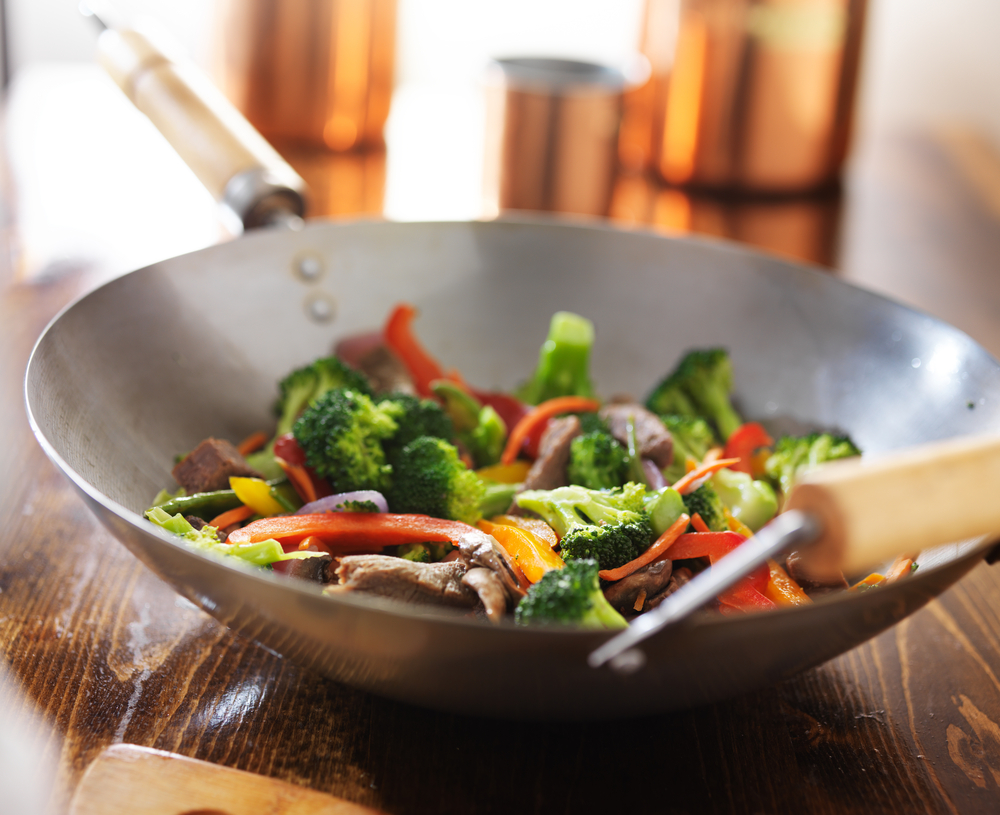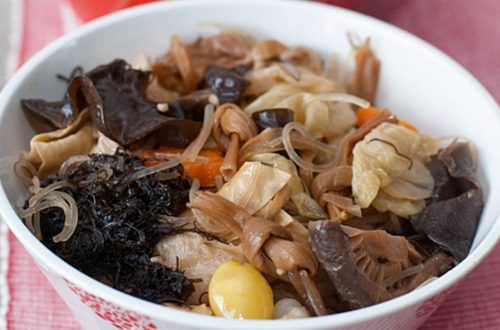
Wok’s Not to Like: Easy, Fast, Nutritious Stir-Fries
I admit to being partial to stir-fries. Not only are they fast and convenient one-pan meals; stir frying is a way to add a variety of vegetables to a main dish.
This Chinese cooking technique is done in a wok, a bowl-like iron or sheet pan typically heated over a flame. Where Western cooks sauté their food, the Chinese use the technique called chao to quickly prepare meals that usually includes lots of vegetables and a small portion of protein. The techniques vary: slippery stir-fry; explode stir fry; small, simple stir-fry, raw stir-fry; cooked stir-fry; and stir-fry till fragrant. Explosive stir-fry, for example, entails heating the wok to red-hot before the oil and ingredients are added for a fast toss and turn that typically takes less than a minute.
Nutritious
What’s great about this process is that it results in a meal that’s low in fat content and flavorful. The short-hot temperatures retain vitamins and minerals, especially water-soluble vitamins such as C and a host of B vitamins. The high heat also concentrates flavors; the Maillard reaction of browning the proteins allows for a rich, savory flavor.
And since this is the beginning of the local growing season, it’s an opportunity to incorporate more vegetables into our diet. All a stir-fry meal requires is fresh vegetables, a protein if you choose, and the ingredients for a sauce – typically soy sauce but also sometimes hoisin sauce, fish sauce, or even barbecue sauce. As for a pan, a wok works best but you can get by with a good high-rimmed skillet.
When you’re ready to cook, prep all your ingredients (cut, chop, slice, and measure out everything). As for your proteins, whether beef, poultry, chicken, tofu, or seafood, I suggest slicing them in thin strips so that they cook fast. I also marinate them 10 or 15 minutes in a mixture of cooking wine, soy sauce, and cornstarch. When it’s time to start cooking, strain out the meat and preserve the marinade.
And flavorful
Now heat up your wok. As it’s warming, you might want to braise your aromatics, usually ginger, garlic, and scallions, in oil before the wok becomes too hot. Remove them before the wok is fully heated up. Then add some fresh oil and your chopped vegetables and cook, stirring frequently to move them through the hot oil at the center bottom of the wok. If they’re still a little “bitey,” you might want to add some broth to the wok, cover and steam the veggies till done. Then remove them, add fresh oil to the hot wok, and place the protein strips in one layer in the wok, stirring the slices in the hot center until all are cooked. Toss in your aromatics, vegetables, marinade, and any additional broth to balance out the sauce. Continue cooking till the vegetables are heated and the sauce has thickened slightly, and it’s ready to plate. You might want to garnish with fresh bean sprouts or citrus wedges, chopped scallions, cilantro, or peanuts.
Zhù nǐ hǎo wèikǒu is Chinese for “Wishing you a good appetite.”



